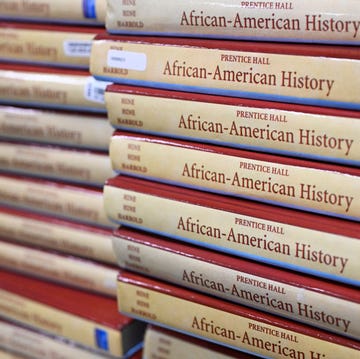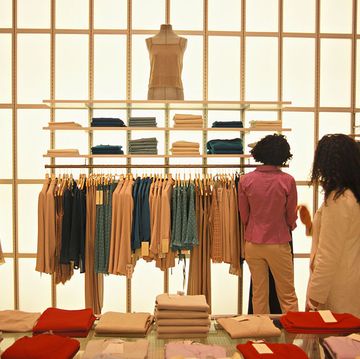When I started studying chemical engineering at Tulane, I thought I was going to be pre-med. I really wasn't exposed to that many professions that were science-based, but I knew of the doctor route, so I thought that would be the career for me. When I got to chemical engineering school, it was around the same time that the world was waking up to the issue of hazardous waste, and to what we now call the Superfund Program [which cleans up hazardous waste] and Superfund Sites like Love Canal in Niagara Falls, New York. The people living in the Love Canal neighborhood found out that they were actually living on top of a toxic waste site, and back then, we didn't know what to do with it or who to call—the Department of Health? The water department? The emergency department?
On top of that, I had by that point started working in petroleum engineering, and I had relatives who lived along what we now call Cancer Alley in Louisiana and worked in some of the chemical plants. All of them had some ailment; oftentimes it was physical. To see people who were petrified and angry because they didn’t know how to hold their government accountable for the fact that their children might be sick not today, but 50 years from now? It just really hit me. It reinforced that yeah, companies provide us jobs, but sometimes the toll can be very high.
When I studied chemical engineering, no one ever talked about where the waste was going—if it was going into the air, if it was going into the water, if it was going into the land. As I continued studying in grad school at Princeton, there was a professor who did a lot of the work on the [hazardous waste dump] site called Sylvester in Nashua, New Hampshire. So I got interested in environmental issues through them, and my interest just kept growing after.
More From Harper's BAZAAR

By the time I finished school, I knew I probably wasn't going to work for the oil companies that had paid my way through school via scholarships. I worked at a nonprofit for a year, but at that time, anybody I looked up to had worked at Environmental Protection Agency. An acquaintance helped me get my first interview at the EPA, and I got hired not long after that.
When I first started at the EPA in 1987, I was based in Washington D.C., where I worked on policy and guidance. About a year and a half later, I moved to the New York office in downtown Manhattan, and at that office, you work on actual sites. I was in the Superfund program, so my sites were up in upstate New York. They were an Alcoa plant, a General Motors plant, and a Reynolds aluminum plant, which had all put PCBs (polychlorinated biphenyls) into the water around the St. Lawrence Seaway, which sits adjacent to an Indian reservation, the Mohawk Nation at Akwesasne. There was so much injustice in that; these people were saying, "This is where you've given me to live, and yet PCBs accumulate in fish here so my diet is impacted; I live off of fish that I can no longer eat without getting carcinogens in my body, and I have to live with emissions."
It doesn't take very long in the field to realize that environmental injustice tracks with poverty. You don't site your incinerator in a rich neighborhood. You find a poor one, because there's less political power. And unfortunately, too often in our country, poverty tracks with race, so many times, those in the environmental field find themselves working in communities of color, and those communities have come to believe that they don't really have much political power. Of course, the over time the federal government saw an extension of the Civil Rights Act in environmental justice, and Clinton issued the first environmental justice executive order in 1994. The idea that environmental justice could be grounds for a civil rights case became part of our lexicon.
My mother was living in New Orleans when Hurricane Katrina hit in 2005. I had gone down there with my brother to celebrate her birthday in August, but she was also dealing with some health issues. My brother lived in Northern Louisiana, so I drove my mom from New Orleans up to Bossier City, Shreveport area. As we were pulling out of the hospital, she didn't want to go, because if you grow up in New Orleans, you don't leave for hurricanes. My husband and my brother were both like, "Yeah, you should leave.” So luckily, we did. Her house didn't wash away, but when we got back it'd been sitting in water for months. So yeah, I feel the effects of climate change personally.
In 2008, I got a call asking me to go to Chicago for an interview with then-President Elect Barack Obama, who was interested in hiring me to be the EPA Administrator. It was probably the first and last time in my career where I sat in an interview with someone who was my peer. I mean, he grew up in Hawaii, I grew up in New Orleans, but we had the same cultural touch points. We talked about everything— what he wanted to do, all of his ambitions. I knew after it was over that I'd gotten a job, because he wanted me to meet the incoming chief of staff. It was a huge, huge honor.
I remember him saying to me, "No, we really are going to attack this climate thing." And of course, he said as much in his inaugural speech. We started doing environmental justice tours where we would go and sit with communities across the south and just listen. That was important because for many of those communities, it was the first time they ever had the people in Washington come and spend time with them. That gave them a different level of visibility. I was also the first EPA administrator to go to Africa on an official mission. That was amazing.
Policy-wise, we established the Endangerment Finding, which determined greenhouse gas pollution endangers public health; and we established the Mercury Rule, which aimed to eliminate 70 percent of remaining mercury emissions and ultimately forced a lot of companies to reexamine their coal-fired power plants and realize that they should shut them down. We also finalized fuel efficiency standards. At the time, those were a really big deal, because California was worried that it was going to lose its ability to set vehicle standards.
By 2013, President Obama was running for reelection, and it felt like the right time for me to go. Then Tim Cook called from Apple. I had met him a couple of times when he was COO, but by then he had become CEO and he asked me to come visit the campus. Working at Apple wasn't in my plans, but to see a CEO who cared so much about environmentalism reminded me in many ways of talking to the president-elect. Here are these two leaders in very different fields saying, "This is a priority for me." I mean, what else more could you ask for? At the end of that first day, he said, "I want you to come work with us," and sure enough, I did.
Tim was really clear. He wanted Apple to be a leader. He always talks about being a ripple in the pond, and wanted to make sure that we weren't just spending money, but that we were enacting things that would become part of a sustainable way of doing business so that other businesses would do what we do. Apple is a pretty secretive company. We don't talk about what we're working on until it's ready. So when we decided we were going to run the company on a hundred percent renewable energy and successfully did in 2018, we made a big deal of that. When our global corporate operations became carbon-neutral in 2020, we made a big deal of that. And when we launched our Restore Fund, which is our plan to invest in nature and scale nature-based carbon removal from the atmosphere, we made a big deal about that.
When we set our Apple 2030 goal, we also made a big deal of that. Apple 2030 means that we need all of the people who work in our supply chain, the ones that work directly for us and a few tiers below, to promise and then accomplish clean energy by 2030. Some have already accomplished it; some are in the process of doing so. And what many of them have said is, "Okay, well if I'm going to do clean energy for Apple, I might as well do clean energy for everyone." Our suppliers supply lots of companies, so that's huge; by helping them go to clean energy, we're helping other companies go to clean energy.
Something else we’re proud of is our new Apple TV+ series Extrapolations, which was directed and written by Scott Z. Burns, with help from additional writers including Dorothy Fortenberry, who co-produced and wrote The Handmaid’s Tale. Extrapolation is the action of playing something out into the future with the help of data, and scientists use it all the time. That's what climate change science is based on. The show goes from year 2037 to 2070 and over that period of time, it tries to show what will happen to the earth and its ecosystems and its people, all while telling a pretty interesting story about the role of technology.
I was with Scott at Apple the other day, and I was telling him that the thing about storytelling is … Every time I see a flood now, I immediately know what those people are going to be dealing with. Not for a month, but for years. There are people in New Orleans who never recovered from Katrina. Part of what I love about storytelling is you don't have to go through something personally to feel empathy for what others will experience.
The thing I've heard Scott and Dorothy say about Extrapolations, is that it's focused on humanity. It's not just a science and technology discussion, but it's also about the central idea that it will be our humanity that saves us. It's our humanity that dooms us sometimes, but it’s also our superpower.
The whole idea is that you should get hope by doing something. I think young people encourage me and give me lots of hope because they're doing something. They're being really clear politically in local communities and in the way they live their own lives. And they make a different set of calculations around what they'll buy and what they do. It's not perfect, but they’re definitely much more aware than I was at their age. So keeping the hope is about taking those actions, demanding those changes, acting accordingly in the voting booth. Hope might need to be renewable. You might need to generate your own. And the way to generate your own is to do something.














